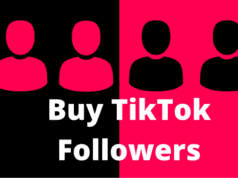
Social media is everywhere.
We are wired in to Facebook, Twitter and Instagram, and live by our devices day in and day out.
While there are a range of potential concerns that come with social media, there is plenty of good that can be done through this powerful medium. With its personal reach into our lives and our willingness to share and expose parts of ourselves, social media is, for many of us, part of our identity. As businesses and people concerned with behaviour change it’s vital that we’re leveraging this powerful tool to enhance our ability to make a lasting impact.
When used appropriately, social media can be hugely impactful as far as creating positive social change.
With social media it’s possible to have a two way conversation with your consumers or users, as opposed to traditional advertising or marketing which is largely one-sided.
It’s possible for your business or brand to engage with users directly on a platform that is familiar and comfortable for them. This is powerful beyond measure, and in this article we’re going to go through some of the best practice tips we know for creating social media content so that you are primed to use it to your advantage. Whether you don’t understand social media, don’t have time for it or haven’t seen how social media can have an impact in your business, this article will hopefully assist you.
What to post?
When social media first started out, it was simple to get noticed by your target audience.
You merely invited people to ‘Like’ your page, you posted content (such as an image or a chunk of text) and then this appeared on people’s’ feeds. Fast forward to today; the algorithms that govern who sees what, and when, and for how long are a bafflingly complex and demand that you promote or pay for space and airtime. This is all well and good, but if you don’t know what to post, you may end up spending time creating content; investing money promoting something that was never going to hit the mark anyway.
It’s important to have a fundamental understanding of what defines your brand and business, and then post consistent content that boosts this ‘brand identity’. You can read more about brand identity and the importance of consistent messaging here. Suffice to say, once you understand your brand you can choose what to post; and this will inform your decision-making.
If your brand is fun, irreverent and joyful you might post playful images, quotes, and videos that speak to this brand identity. Similarly, if your brand is quite serious and intelligent you’d be linking to journal articles, posting updates and ensuring that your tone of voice is on point, every time. You could post:
-
- Adjacent content – i.e. something that’s tangentially relevant to your audience
- Tips and Tricks
- Responses to customer posts
- Non-promotional company information – and this can serve to humanise your brand
- Job openings and opportunities
When to post?
While it might be tempting to think that posting every day (or multiple times a day) is the best option, the reality is that firstly this is largely unsustainable, and secondly it has the potential to turn your users off, as it can be seen as spamming. Truly though, there’s no right or wrong answer here, and if your brand has multiple regular daily updates this can be great – so long as it’s sustainable. And conversely, posting once a week can be fine as well.
Do be aware though that, thanks to the aforementioned algorithms, social media status updates don’t last long – so what you post isn’t visible for long. Indeed, some studies report that organic reach is as low as 2%. As a result you need to be monitoring what you’re posting and testing and measuring to get results. A clever strategy could be to combine ‘organic’ posts (that is, posts that aren’t boosted by advertising spend) and ‘paid’ content (which is advertising content) and finding the right balance between the two.
How to ensure engagement
As we mentioned before, social media is a great way to have a two way conversation with your users.
That’s why you need to be using your social media channels to respond to users’ questions and mentions. If you have multiple people monitoring social media feeds then have guidelines to make sure that everyone stays ‘on brand’ and consistent. Take a look at Lifeline’s example answer scripts and guidelines as a good place to start developing your guidelines. Engagement can also be driven by examining the data from your social media profiles. Facebook has a lot of information available about engagement, and you can use this data to modify the type, time and format of your posts.
Choose your channel wisely
We’ll keep this one short and sweet: If your audience aren’t on a social media platform, why would you share on there? As an example, if you’re trying to reach decision-makers in a particular field or industry a great place to start would be with specific targeting via LinkedIn. You have the capability to reach out and connect with people in a very particular way, and you can leverage this to share your message. Conversely, if you’re looking to reach a large section of your audience you can use Facebook to target certain demographics and audiences with particular interests. Understand your audience, and then speak to them where they hang out online.
Content choice matters
When deciding what kind of content to post always make sure that it matches the kind of medium you’re putting it out on. Are you sharing video? It had better be optimised for mobile – even though 85% of all business related video views take place on desktops and only 14% on mobiles, that’s still a big portion of the market and you cannot afford to have poor quality video associated with your brand. Whatever you choose to create and put out there high quality, tailored formats are essential.
Monitor and listen
We did mention this above with engagement, but we’ll say it again here because it’s important: you have to monitor your results and make changes to tweak your messaging. Read the data, check month on month, make adjustments. Are you using split A/B testing with your messages? Facebook offers split testing and, if you’re completely confused about what it is and why it’s useful, there is a great resource here which helps you to understand its efficacy. Suffice to say, it can help you to get better results, improve conversions and increase engagement.
Use consistent branding and voice with your posting
As we spoke above about your tone of voice and branding, it’s important to be consistent.
We humans do love predictability. Think about it. In the movies the good person always wins, the bad people get what they deserve and everyone goes home happy. With your brand or business you always have the same tone of voice (which is human, approachable and knowledgeable—among other things) and you will, over time, earn familiarity, trust, and likeability in your community by simply showing up time and time again.
When you use social media wisely, and continue to test and learn, you will enjoy the benefits of a powerful platform (or platforms) which allow you to speak to your customers in a genuine and relatable way. You can insert your business or brand in a personal space for your users, and you can become part of their identity. By being consistent, testing and measuring your message while ensuring that your posts are informed by your brand, you will be able to show up where your users are, and be seen to offer value rather than annoyance.








